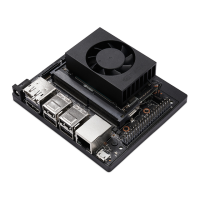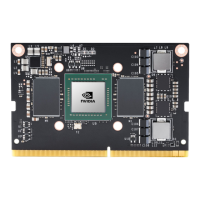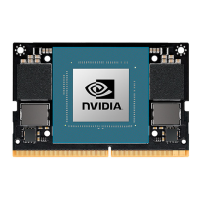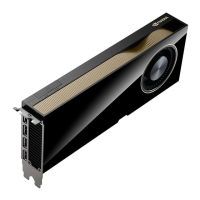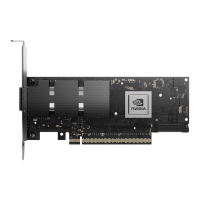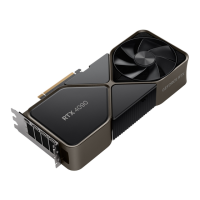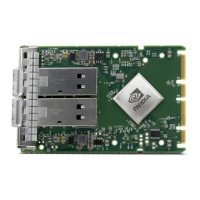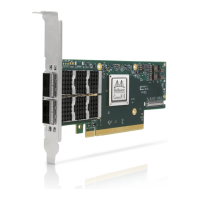USB, PCIe, and UFS
Jetson AGX Xavier Series Product DG-09840-001_v2.5 | 50
7.2.1 PCIe Design Guidelines up to Gen3
The following table details the PCIe design guidelines up to Gen3. See Section 7.2.2 for design
guidelines regarding PCIe Gen4.
Table 7-12. PCIe Interface Signal Routing Requirements up to Gen3
2.5GHz, half-rate architecture
Configuration / Device Organization
Unidirectional,
To GND Single Ended for P and N
Trace Impedance differential / Single Ended
Trace Spacing (Stripline/Microstrip)
Pair – Pair
To plane and capacitor pad
To unrelated high-speed signals
3x / 4x
3x / 4x
Dielectric
TX and RX should not be routed on the
same layer. See Note 2.
Breakout region (Max Length)
Minimum width and spacing. 4x or
wider dielectric height spacing is
Trace loss budget (for carrier board routing)
Routing direct to device
Routing to PCIe/M.2 connector
-14.5
-10.5
dB/in
@ 4GHz (See TBD),
Loss: GEN3 budget – module – end
device (-22dB + 3.5.dB + 4dB)
Loss: GEN3 budget – module – end
device (-28dB + 4.24dB + 8dB)
Max trace length (delay)
Direct to device on carrier board
Stripline
Microstrip
Routed to PCIe or M.2 connector
Stripline
491 (3383)
460 (27.19)
355 (2450)
in (ps)
Mid-loss PCB of 0.8dB/in (Microstrip) or
0.75dB/in (Stripline) is used. Also,
6.9ps/mm for Stripline routing and
5.9ps/mm for Microstrip.
Max PCB via distance from the BGA
Max distance from BGA ball to first PCB
via.
PCB within pair (intra-pair) skew
Do trace length matching before hitting
discontinuities
Within pair (intra-pair) matching between
subsequent discontinuities
Differential pair uncoupled length
Place GND vias as symmetrically as possible to data pair vias. GND via
distance should be placed less than 1x the diff pair via pitch
PTH Vias
2 for TX traces and 2 for RX trace
Longer via stubs would require review
Routing signals over antipads

